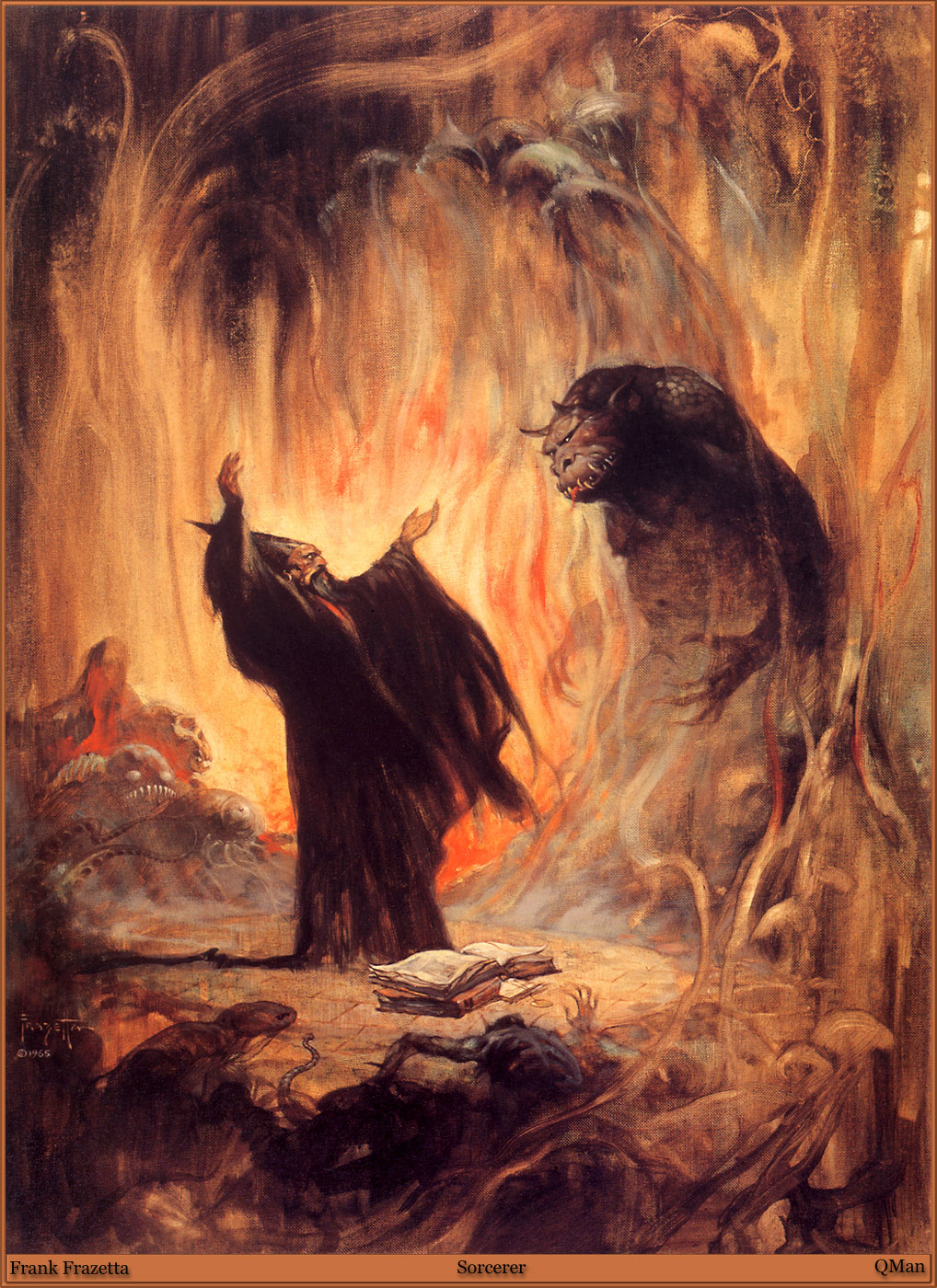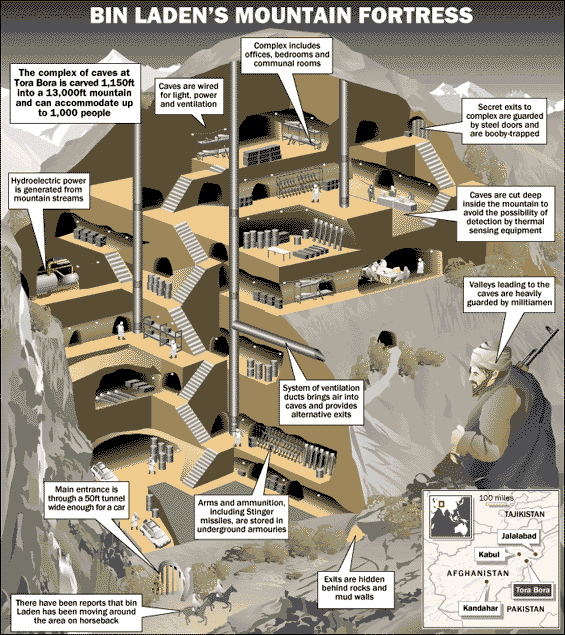
Remember the four months after September 11, 2001?
Afghanistan! The American response to the destruction of the World Trade Center and parts of the Pentagon played out like the action movie narrative it wanted to be, violent acts of Hestonian moral clarity acted out on an ideal soundstage: the rugged mountains of Afghanistan. Our "time to put on the war paint" revenge saga would appropriate a potpourri of fantastic precedents in which ramrod American paladins export frontier justice to the pre-medieval realm beyond the Khyber Pass—Rambo, Soldier of Fortune magazine, Robert E. Howard, Rudyard Kipling, High Noon. One almost expected the White House to assemble a special team of actual 1980s action movie heroes to be HALOed in as a kind of semiotic vanguard against the bad juju emanating from the mythic territories of Central Asia.

Prior to that, our primary experience of Afghanistan was its portrayal in adventure narratives or their news media analogs, from John Huston's The Man Who Would Be King to its 20th century Rocky Mountain döppelganger, John Milius' Red Dawn. The CNN narrative played to all that—remember the first time you saw a picture of some Special Ops soldier in massive beard and civiilian combat gear, riding a horse across the B-movie landscape of Armageddon? In that brief period of the immediate military response to 9/11, we were all complicit in writing history real-time as a postmodern Western, each of our soldiers some kind of Outside magazine update of the frontier scout, loner Hawkeye with a customized AK-47 and a little bit of Pashto.
And the enemy was immediately personalized as an enigmatic other, a mysterious necromancer out of some 1970s Frank Frazetta painting, dark Gandalf crossed with Bond villain.

Concrete evidence of this narrative overlay of the dramatic events occurring in real life were all over the place, from the real-time action figures based on photos of our S.O.F. paladins to the insane USA Today-style graphics of Bin Laden's imagined mountain fortress, a work of news media fiction based on DC Comics cutaways of Kal El's Fortress of Solitude, a ready-made design for the G.I. Joe Spin Boldak Adventure Playset.

As detailed in this excellent piece by Edward Jay Epstein, the comic book secret headquarters meme fit so perfectly with the American master narrative, that what started as leftover lore from the 1980s became a government-certified part of consensus reality during the climatic run-up to the showdown at Tora Bora:
The story probably reached its high point on NBC's Meet The Press on December 2nd when Tim Russert, the host of the program, provided Secretary of Defense Donald Rumsfeld with the artist's rendering of bin Laden's fortress. The interview proceeded:
Russert: The Times of London did a graphic, which I want to put on the screen for you and our viewers. This is it. This is a fortress. This is a very much a complex, multi-tiered, bedrooms and offices on the top, as you can see, secret exits on the side and on the bottom, cut deep to avoid thermal detection so when our planes fly to try to determine if any human beings are in there, it's built so deeply down and embedded in the mountain and the rock it's hard to detect. And over here, valleys guarded, as you can see, by some Taliban soldiers. A ventilation system to allow people to breathe and to carry on. An arms and ammunition depot. And you can see here the exits leading into it and the entrances large enough to drive trucks and cars and even tanks. And it's own hydroelectric power to help keep lights on, even computer systems and telephone systems. It's a very sophisticated operation.
Rumsfeld: Oh, you bet. This is serious business. And there's not one of those. There are many of those. And they have been used very effectively. And I might add, Afghanistan is not the only country that has gone underground. Any number of countries have gone underground. The tunneling equipment that exists today is very powerful. It's dual use. It's available across the globe. And people have recognized the advantages of using underground protection for themselves.

The assault on Tora Bora was built up as the denouement of our real-world action movie. The big showdown in which Sgt. Fury and his Howling Commandoes would trudge through the snow and blast their way into the hydroelectric plant and the TV rooms and the 2000-room hotel and the submarine base and the Soviet wonder tanks and bring the bad guy back to be prosecuted by Sam Waterson.
Eight years later, we are still waiting for the final act. The picture went off-script and has never gone back. No wonder President Obama has been dithering, in a quandary about what to do. He's trying to figure out how to make the Afghan War fit back into the American narrative of how we roll, instead of being the Forever War. The unfulfilled search for this fantasy fortress, and the evil mastermind within, turned out to be the missing reel of our Zeitgeist. Such a massive delayed climax of our cultural self-conception that you can't blame the Alex Joneses of the world when they wonder whether Bin Laden actually exists, or is just an invention of our secret masters smoking cigars in the club rooms of the Bilderberg Group.

In this context, it is especially interesting to see the story of what really happened up there in December 2001 laid out by John Kerry's Senate Foreign Relations Committee staff in their new report. A partisan spin, no doubt, with patrician Kerry rehashing arguments he made to little effect in 2004, but a fascinating glimpse into what was on that missing reel of the post-9/11 history that could have been.
The report relies on recollections from an ex-Delta Force officer who goes under the pen name of (I kid you not) "Major Fury." Fury was apparently in charge of the 90 special ops troops who were at Tora Bora with the Afghan irregulars, and he vividly describes the scene of our soldiers listening in to the non-stop radio chatter among Bin Laden and his ~300 Qaeda manning the last stand, right up through the dropping of the first Daisy Cutter since Vietnam, when many of the men deep in those caves were vaporized.
The report continues with another classic Hollywood scene, the maverick CIA operative's futile efforts to get the brass to do the right thing (think Willem Dafoe in Clear and Present Danger) to accomplish the just mission:
Another confirmation came from the senior CIA paramilitary commander in Afghanistan at the time. Gary Berntsen was working at the CIA’s counterterrorist center in October 2001 when his boss summoned him to the front office and told him, ‘‘Gary, I want you killing the enemy immediately.’’ Berntsen left the next day for Afghanistan, where he assumed leadership of the CIA’s paramilitary operation against the Taliban and Al Qaeda. His primary target was bin Laden and he was confident that the Al Qaeda leader would make his last stand at Tora Bora. His suspicions were confirmed when he learned bin Laden’s voice had been intercepted there.
From the outset, Berntsen says he was skeptical about relying on Afghan militias ‘‘cobbled together at the last minute’’ to capture or kill the man who ordered the 9/11 attacks. ‘‘I’d made it clear in my reports that our Afghan allies were hardly anxious to get at al Qaeda in Tora Bora,’’ he wrote in his own book, Jawbreaker, which was published in late 2005. He also knew that the special operations troops and CIA operatives on the scene were not enough to stop bin Laden from escaping across the mountain passes. In thebook, Berntsen uses exclamation points to vent his fears that the most wanted man in the world was about to slip out of our grasp.
‘‘We needed U.S. soldiers on the ground!’’ he wrote. ‘‘I’d sent my request for 800 U.S. Army Rangers and was still waiting for a response. I repeated to anyone at headquarters who would listen: We need Rangers now! The opportunity to get bin Laden and his men is slipping away!!’’
At one point, Berntsen recalled an argument at a CIA guest house in Kabul with Maj. Gen. Dell Dailey, the commander of U.S. special operations forces in Afghanistan at the time. Berntsen said he renewed his demand that American troops be dispatched to Tora Bora immediately. Following orders from Franks at U.S. Central Command (CentCom) headquarters at MacDill Air Force Base in Tampa, Florida, Dailey refused to deploy U.S. troops, explaining that he feared alienating Afghan allies. ‘‘I don’t give a damn about offending our allies!’’ Berntsen shouted. ‘‘I only care about eliminating al Qaeda and delivering bin Laden’s head in a box!’’
Dailey said the military’s position was firm and Berntsen replied, ‘‘Screw that!’’

Stories by soldiers of secret battles that paint themselves as heroes require due skepticism, as do political "fact-finding" reports by legislators with a partisan promotional agenda. But notwithstanding the layers of spin, the report is pretty compelling in making the case from multiple sources that Bin Laden was really there in Tora Bora, and allowed to get away because the Pentagon didn't want to send in a large contingent of American troops to crowd out the Afghan allies or piss off the Pakistanis by blocking the back door to the Tribal Areas.
Thinking about it from the perspective of the end of the decade, one can't be blamed for wondering if letting Bin Laden go wasn't a necessary predicate to the initiation of the Iraq War. If we had captured Bin Laden, wouldn't that have sated the Furies possessing the American public, and deprived the Bushies of the narrative they constructed to justify that invasion? Alas, we'll never know. We're stuck instead with the Forever War, one whose opportunity for an ending came and went a long time ago.
Good luck inventing a victory condition for this one, Mr. President.

5 comments:
I think you nailed it there in the end--Bush needed OBL in the same way that Big Brother needed Emmanuel Goldstein, a face to support the old Manichaeist worldview. The Bush administration never seemed to position themselves so much *for* anything as against whatever was convenient--taxes, gay marriage, etc.
Woodward made a point in one of his books on Bush (I forget which, but I think it was the first one) that Rummy et al were emphatic in not painting OBL as the face of terrorism in the US. Not sure how much of that was blowing smoke, but it certainly didn't take...
Interesting speculation about the failure to catch OBL. The biggest spin of all is that OBL's capture is critical to success against Al Qaeda/Islamic Extremism/ Terror/what have you.
Typically insurgent groups are quite capable of replacing killed or captured leaders. The FLN's leaders were taken into custody in 1956, two years after the outbreak of the Algerian War of Independence. Yet in 1962, France walked away from their colony.
OBL's capture/killing isn't critical in the grand scheme of things, but it'd be a hugely symbolic victory. And I can't think of many folks more deserving of being dead.
Great article, featuring my favorite aspect of this, the stealthy pop-culture influence on post-9/11 American foreign policy. The minute the US military entered Afghanistan, I couldn't stop thinking of the one movie I had seen that seemed to portray a part of history mostly ignored by US media: the Russian experience that country, in The Beast of War from 1988. Quite a head-trip to see American actors playing out what is essentially the Vietnam experience, but with Russian names. Especially now.
http://www.youtube.com/watch?v=SCcNk-gwK00
Thanks, all. Rev, "The Beast of War" is crazy -- thanks for the link, now I am going to have to watch the whole thing.
Post a Comment